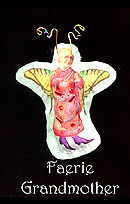Scraps of fabric can be used to create rolled beads. Here’s the simplest version.
You’ll need fabric, white glue and water, and something thin to wrap the beads around. This can be a thin dowel, toothpicks, shishkebab skewers, thin cocktail straws, or… Well, see what you have around the house. You could even use heavy gauge wire such as a coat hanger.
First, decide if you want to use fabric “as is,” or embellish it. It doesn’t have to be cotton, but cotton absorbs glue most easily.
Dye, stain, paint, and embellish with color and perhaps glitter, if you like.
Then, cut or rip the fabric into thin strips. Remember that 100% cotton tears along straight lines. So, you can cut a small nick at the end, and then tear it from there.
Soak the fabric in a mixture of white glue and water. I’d guess that a 50/50 mix would work. This isn’t precise. You want it thick enough to stick together, but thin enough not to be gloppy.
Roll each bead around whatever you’re using at the center. The purpose of this is just to keep a hole in the middle. You’ll remove the dowel (or wire or toothpicks) when the glue is mostly dry.
(If you wait until the bead is completely dry, it may be permanently adhered to the center support. Removing the center early allows the middle dry faster.)
If you want to prevent the beads from sticking to the center support, coat the support with a non-stick lecithin kitchen spray. However, this can make it harder to roll the beads; the fabric will tend to slip as you’re rolling.
If the beads were saturated with the glue-and-water mix, the torn edges generally won’t unravel.
It’s best to roll the beads to the size that you want. After they’re made, if you want them shorter, it will be necessary to cut them to size with a saw, or the cutting blade on a rotary tool.
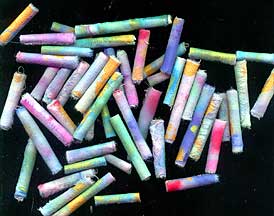
An alternative–probably better and more colorful than rolling rectangles–is to cut the fabric into triangles.
Roll the beads so that the widest side is at the center, and the tip of the triangle is on the outside of the bead.

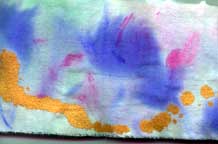
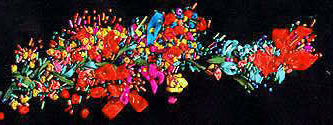
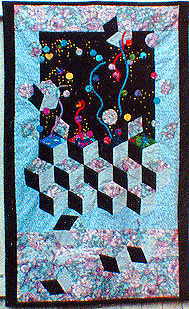 In 1991, I designed and made this quilted wallhanging for a challenge in Salt Lake City, Utah.
In 1991, I designed and made this quilted wallhanging for a challenge in Salt Lake City, Utah. This is a baby quilt that I made in 2003. It’s made with over a dozen fabrics, each 100% cotton.
This is a baby quilt that I made in 2003. It’s made with over a dozen fabrics, each 100% cotton.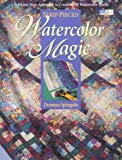
 This rocking chair is called a Lincoln rocker by some, and a Kennedy rocker by others. It’s the same design that Jack Kennedy had in the White House. He felt that it helped his back.
This rocking chair is called a Lincoln rocker by some, and a Kennedy rocker by others. It’s the same design that Jack Kennedy had in the White House. He felt that it helped his back. The chair was well-used and well-loved for several years, until — as shown at left — the dry woven seat finally began to sag and then collapse.
The chair was well-used and well-loved for several years, until — as shown at left — the dry woven seat finally began to sag and then collapse.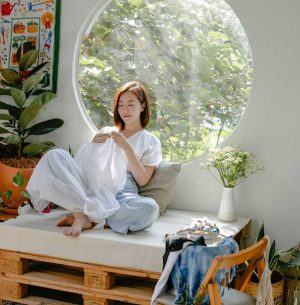
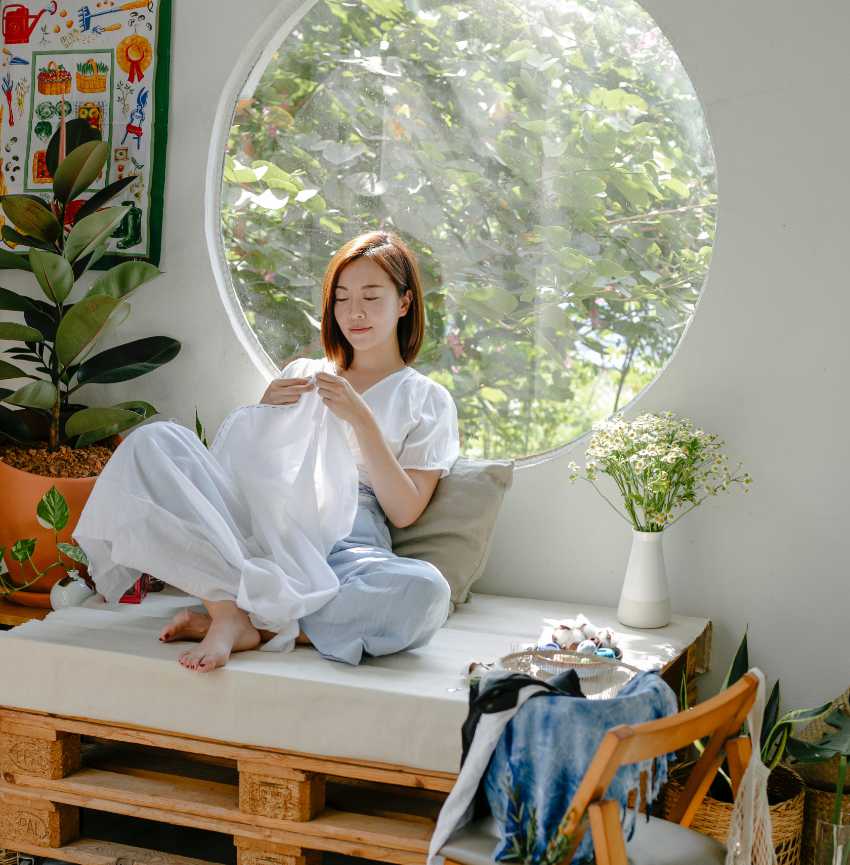 If you’re interested in fabric art but don’t know where to start, here are a few basics.
If you’re interested in fabric art but don’t know where to start, here are a few basics.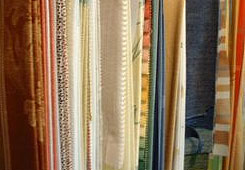 Before rushing out to buy supplies for your fabric art projects, consider a these important points.
Before rushing out to buy supplies for your fabric art projects, consider a these important points.